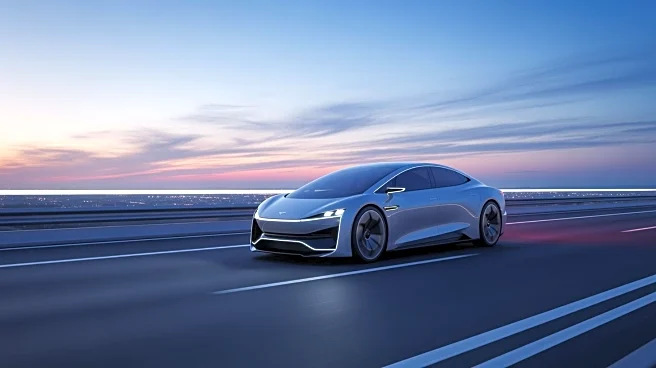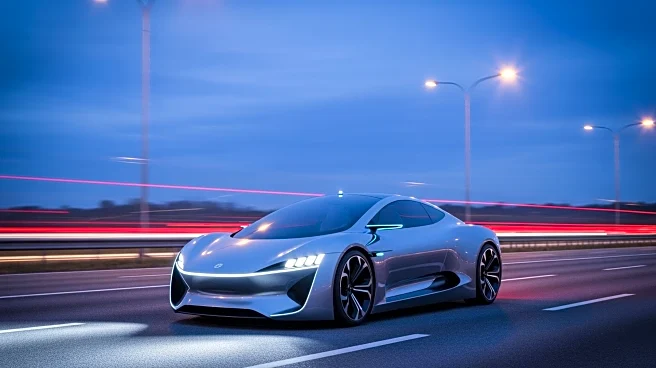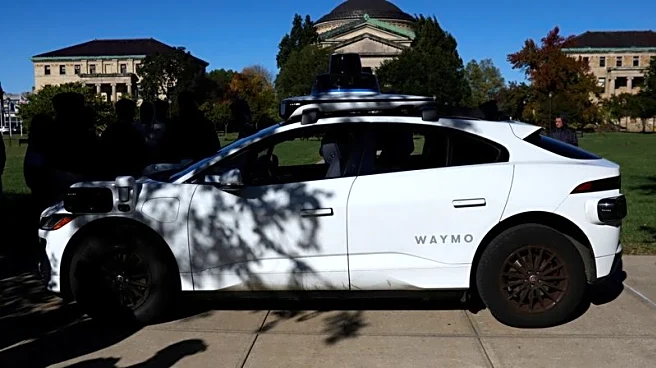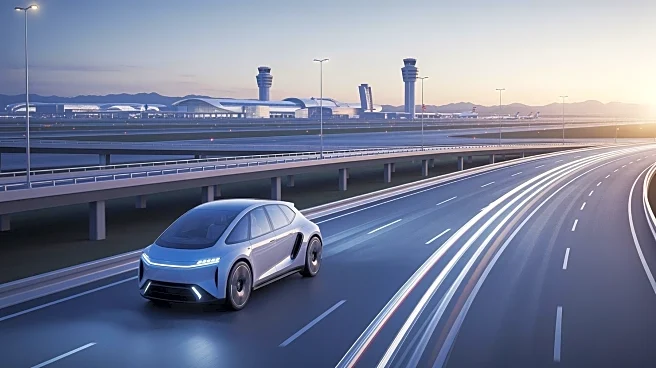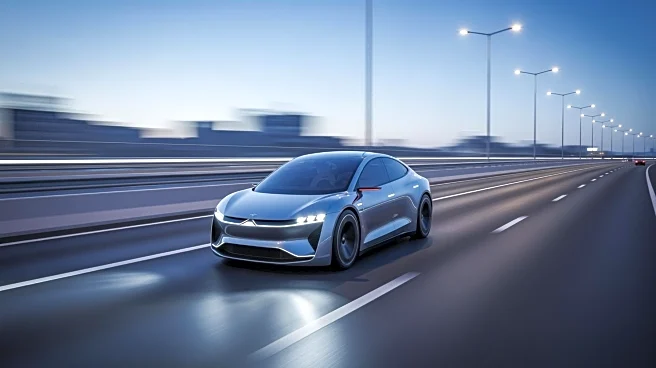What's Happening?
Tesla is set to expand its driverless robotaxi service to Houston, following CEO Elon Musk's announcement that safety drivers will be phased out in Austin by the end of 2025. The service, known as 'Cybercab,'
is part of Tesla's broader plan to offer autonomous ride-hailing in several cities, including Dallas, Las Vegas, Phoenix, and Miami. Currently, Tesla operates robotaxis in Austin and the San Francisco Bay Area, with plans to extend services to San Antonio and Los Angeles. The Model Y, a self-driving vehicle powered by artificial intelligence, is the primary model used in these services. Despite the expansion, Tesla's self-driving system has faced scrutiny from the National Highway Traffic Safety Administration due to reports of safety issues, including cars running red lights and driving on the wrong side of the road.
Why It's Important?
The expansion of Tesla's driverless robotaxi service represents a significant shift in urban transportation, potentially reducing the need for human drivers and altering the landscape of ride-hailing services. This move could lead to increased efficiency and lower costs for consumers, while also providing Tesla owners an opportunity to earn money by adding their vehicles to the fleet during idle hours. However, the safety concerns associated with Tesla's self-driving technology pose challenges, as federal investigations continue into incidents involving the system. The success of this initiative could influence public policy and regulatory frameworks surrounding autonomous vehicles, impacting stakeholders in the automotive and transportation industries.
What's Next?
Tesla plans to open its autonomous ride-hailing network to private car owners by early 2026, allowing them to participate in the service and earn income. As the company phases out safety drivers, it will need to address ongoing safety concerns and comply with new state regulations requiring permits for fully driverless fleets. The expansion into Houston and other cities will likely prompt reactions from local governments, transportation agencies, and the public, who may demand stricter safety measures and oversight. The development of autonomous vehicle technology will continue to evolve, potentially leading to broader adoption and integration into urban transportation systems.
Beyond the Headlines
The introduction of driverless robotaxis raises ethical and legal questions about liability in the event of accidents involving autonomous vehicles. As these services become more prevalent, there may be shifts in employment patterns, with potential job losses for traditional taxi and ride-hailing drivers. Additionally, the cultural acceptance of self-driving technology will play a crucial role in its widespread adoption, as public trust in the safety and reliability of these systems is essential for their success.



